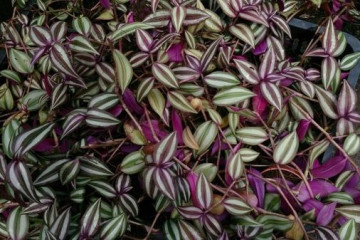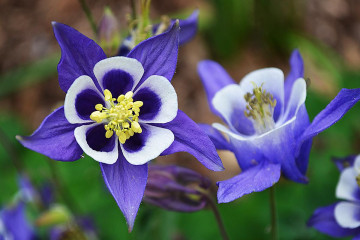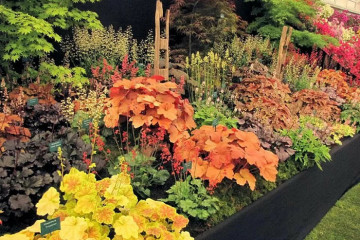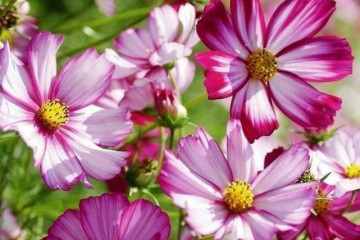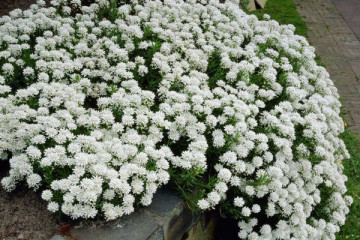Cornflower flower
Content:
Probably, every person has seen a cornflower - the flower is not flashy, but rather beautiful, unpretentious, even graceful in its own way. For some people, it is an annoying weed, while others are happy to decorate their garden with it. So it will be useful to learn more about cornflower.
The origin and appearance of cornflowers

Simple and beautiful flower
You can meet him in almost all European countries. Most often, where they are actively engaged in agriculture. Cornflower, a wildflower, has become a real disaster for rye crops, actively growing among the cereal and causing considerable harm to crops.
In general, every person, at least sometimes getting out of the city, knows what a cornflower looks like. But it doesn’t hurt to tell briefly.
Cornflowers of the Astrov family, or Asteraceae, can be both annuals and biennials and even perennials. The stems are straight and rather tall - from 50 to 80 cm.
The flowers are an exquisite basket. Moreover, the color scheme can be very different. There are white, yellow, blue, purple, red, yellow, lilac, burgundy and others. Of course, thanks to this, the cornflower is a plant of considerable interest to many breeders.
The leaves are very narrow, poorly defined and often adjacent to the stem, which may make it seem as if they are not there at all.
An additional advantage is that it blooms for a very long time - it starts from mid-June and ends in early-mid-October, when the first night frosts hit.
Types and varieties of cornflower
Of course, before you plant a cornflower flower in your garden, you need to find out the description of the different varieties. Still, there are quite a few wild-growing varieties, between which there is almost no difference in care, but outwardly they are very different from each other. This means that there is a great opportunity to decide which one is best for the flower bed.
Field cornflower
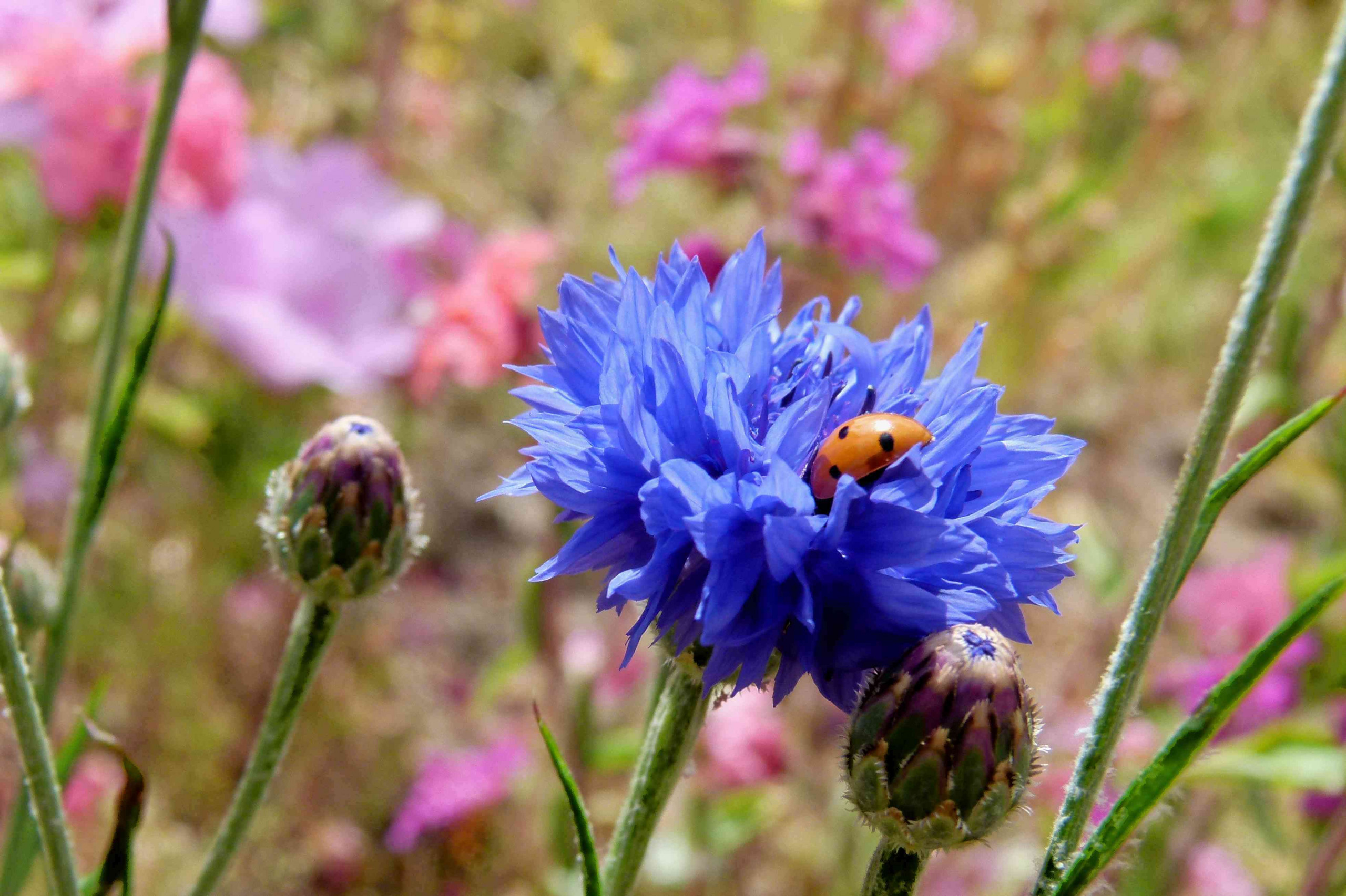
This is not a flower, but a whole inflorescence
Perhaps one of the most common members of the family. On the one hand, it is quite beautiful, has large flowers of a deep blue color - it looks like flax. It grows quite large - some stems reach 120 cm in height!
However, the plant is considered a weed, so an active fight is underway with it. In addition, it poses a considerable danger to some animals. Due to the fact that phenol derivatives are part of the stems, horses, having eaten a large amount of cornflower, may well get severe poisoning.
Cornflower yellow
The real name of this ornamental plant is large-headed grossgeimia. It is a perennial plant.
- The stems are quite tall - they can reach a meter in height.
- The inflorescences are very large - in some plants, the diameter reaches 5 cm.
- The shape is rather unusual, as is the color - a yellow ball.
Bright yellow baskets lead to the fact that they more resemble not a close relative of the common cornflower, but a thistle. From below, the bud is covered with paper-like scales, and the leaves are rough to the touch, rather rough. It blooms, alas, quite a bit - no more than two months, usually from the beginning of July to the end of August.
Cornflower white
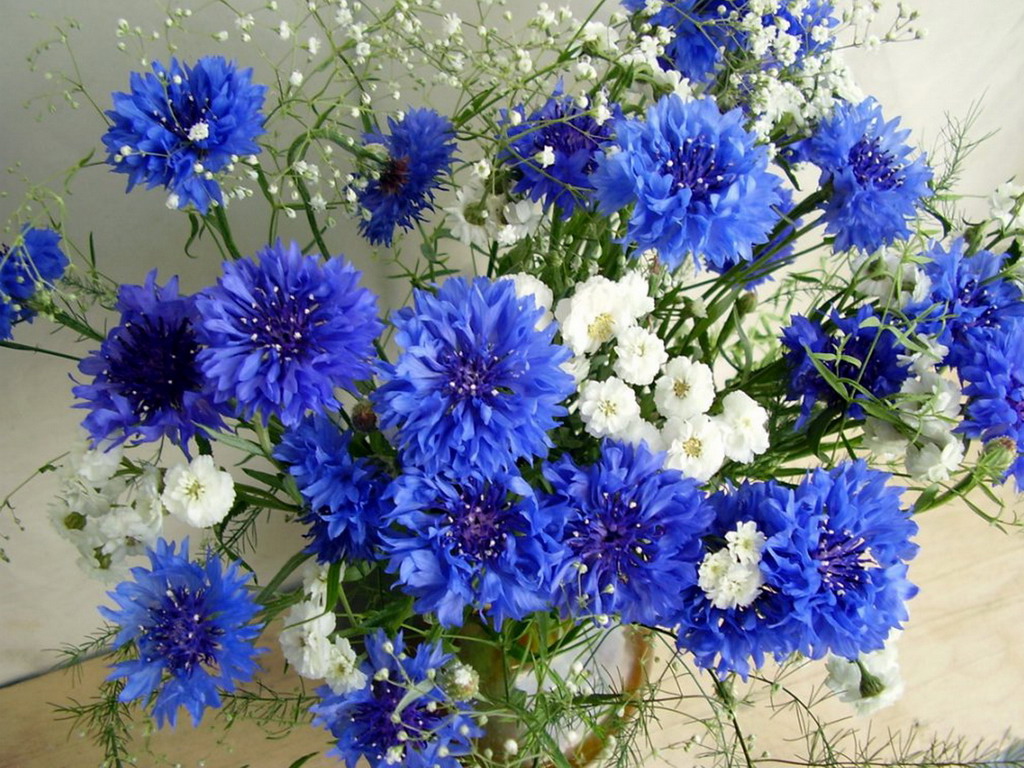
Luxurious bouquet of cornflowers
Quite an unusual variety, more like a chamomile.
The flower, as the name implies, has white petals. It is found most often in the Caucasus and sometimes in the north of Iran. When grown, it forms a rather dense, but low bush - no more than 55 cm. The lower leaves are dissected, the upper ones are smoother. The diameter of the inflorescences may well reach 4 cm.
In general, this meadow flower is of considerable interest to breeders. On its basis, unusual varieties were bred, including John Coutts, which is distinguished by a pale pink color. It begins to bloom in late July and blooms until the end of September.
Cornflower pink
As the name implies, the color of cornflower is pink. But this is not the only interesting feature. This plant also boasts the largest flower in the family - up to 8 cm in diameter. It also smells great. It is not surprising that many gardeners prefer to use this particular perennial for cultivation.
It is very beautiful during flowering, but wilted flowers spoil the appearance, so it is advisable to remove them regularly.
Eastern cornflower
Another perennial plant. The flowers are vaguely similar to dandelion - yellow, consisting of many tiny petals. Differs in unpretentiousness - it overwinters easily, grows on almost any type of soil and even tolerates prolonged drought without any problems without harm to itself.
It grows in length up to 80-120 cm - it all depends on whether it has enough sunlight.
True, it does not bloom for long - most often only a month in the middle of summer. And the flowers are not too large - less often more than 3 cm. Therefore, the species is not included in the list of the most popular cornflowers.
Cornflower purple

Unusual color
A real gift for gardeners who like cornflowers - the flowers of this variety are really rich purple. The magnificent aroma will be a pleasant addition to the beautiful flowers, the size of which, by the way, reaches 5 cm, so you cannot call them small.
An annual plant that grows to a height of 70 cm. The stem is covered with bright green leaves with jagged, jagged edges. If the weather is good, it can bloom for a very long time - from early summer to mid-autumn. At the same time, the purple cornflower, like all its relatives, easily tolerates drought.
What you need to know to plant cornflowers
Of course, in order to arrange a gorgeous garden, you need not only to know how to write correctly - cornflowers or cornflowers, but also to study certain planting rules. Fortunately, they are light enough that even a child can handle them, not to mention a more or less experienced florist.
How to choose the best place
It all starts with choosing a suitable place. If you do not make mistakes here, then the flowers will grow without causing unnecessary problems. And vice versa, having landed on a site with inappropriate conditions, you can spend a lot of time and effort, but not achieve the desired result.
The best place will be a flat area that is illuminated from morning to evening - the plant is not afraid of excessive heat with a sufficient amount of moisture. To increase decorativeness, it is advisable to plant cornflowers next to undersized flowers or shrubs - it will look just great.
Step-by-step planting process
The easiest way to get beautiful flowers on your site is to use seeds. The disembarkation process is best done in late September or early August.
The planting scheme depends on whether the grower is using large varieties or small ones. It can vary from 10 × 10 to 20 × 20 cm. So, it will be useful to know in advance how compact the plant is being planted - this will avoid serious problems in the future.
- The earth is loosened in advance, at the same time making shallow holes - about 1.5 cm.
- The seeds are simply laid out in the prepared holes.
- Then they cover themselves with the ground.
- They are watered abundantly - of course, only if a heavy rain had not passed shortly before, which moistened the soil well.
There is also an alternative planting method - cuttings and roots. But it is used only when working with perennial species and is completely unsuitable for annuals. A serious advantage of this solution is the fact that the transplanted plant exactly retains all the features inherent in the mother.
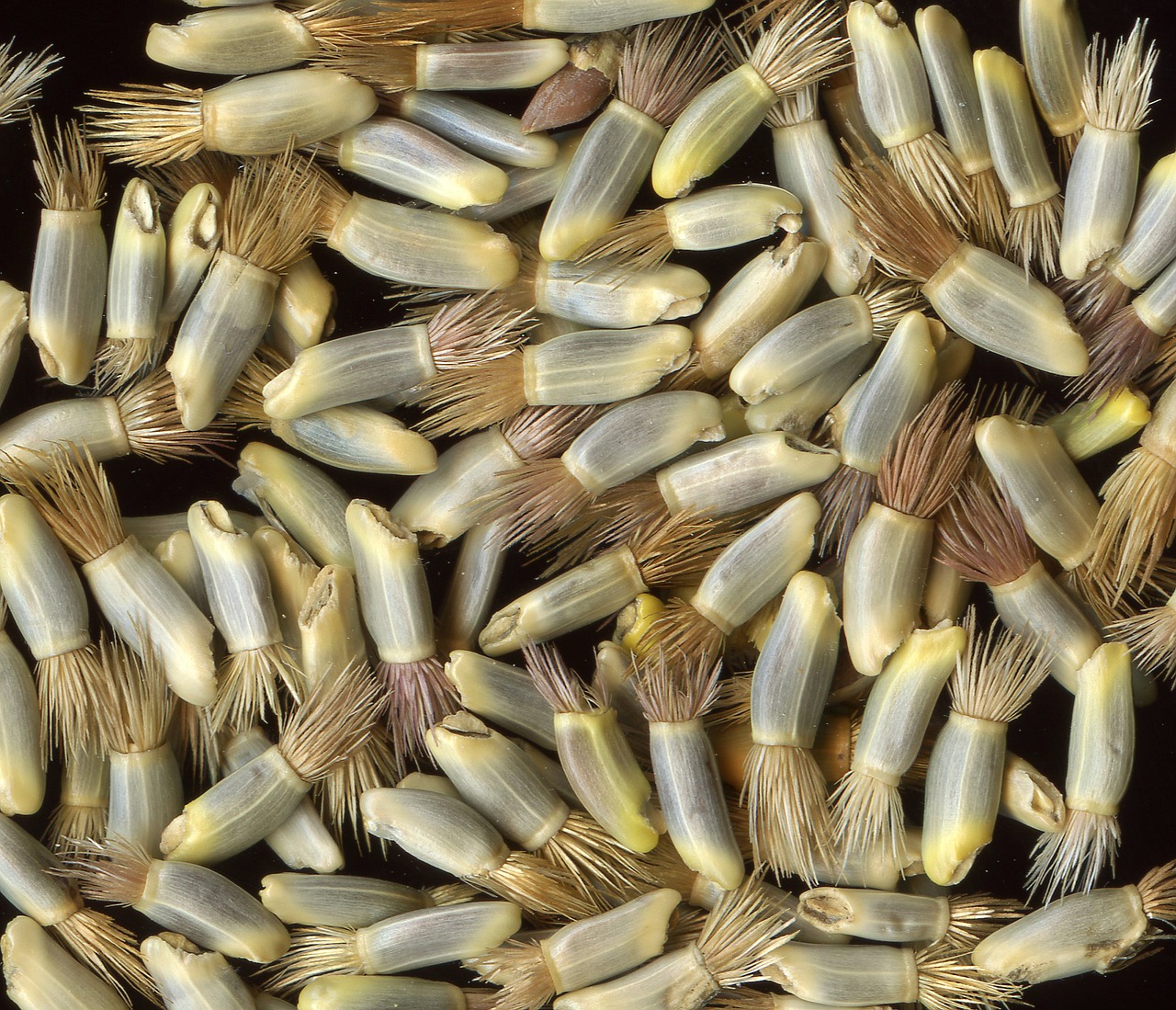
Cornflower seeds
Caring for garden cornflowers
Cornflower is much easier to care for than most garden plants. Still, there are certain features here as well. It is advisable to learn about them in advance so that later you do not face unnecessary difficulties that could be easily avoided.
Watering mode
It is very important not to overdo it with watering. If it rains at least once a week, then it is quite possible to refuse additional moistening of the flower bed. The fact is that the cornflower is perfectly adapted to drought - the stems are dense, the leaves are few, narrow and hard. Therefore, it tolerates a lack of moisture much easier than its excess.
However, you should still monitor the well-being of the plant. Indeed, on hot and windy days, the evaporation of moisture from leaves and flowers increases, so if it begins to fade, it should still be watered.

Bouquet of cornflowers
Top dressing
Annual plants are fed a couple of weeks before flowering - potash fertilizers are used for this. Thanks to this, the buds become larger, and the cornflower will be able to delight others with gorgeous flowers for longer. Repeat feeding should be every two weeks until the end of the season or the end of flowering.
Perennial varieties are fed not only with potash fertilizers, but also with phosphorus fertilizers. This should be done in early to mid-September. A single application of top dressing is enough. Thanks to this, the cornflower will store enough nutrients in the roots to easily survive the cold season, and with the arrival of summer, it will again please the grower with magnificent flowers.
So, although many people consider cornflower a simple weed, in the hands of an experienced grower it can become a real decoration of any garden or flower bed. Moreover, the plant is very unpretentious and does not need constant care.
